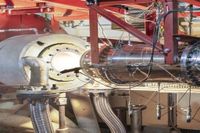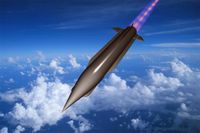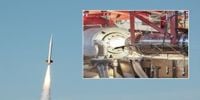Britain has completed a significant hypersonic weapons trial as part of its ongoing efforts to maintain a technological edge over potential adversaries. The latest UK hypersonic research indicates that weapons could soon travel at several thousand miles per hour, exceeding five times the speed of sound within the next five years.
This breakthrough follows a six-week testing period at the NASA Langley Research Centre in Virginia, aided by support from the United States. Scientists have successfully tested an engine for a cutting-edge hypersonic cruise missile, as announced by the Ministry of Defence on April 6, 2025.
The engine has demonstrated how a high-speed, air-breathing propulsion system can operate, allowing for greater ranges than conventional rockets. Defence Secretary John Healey MP commented on the necessity of such advancements: "We are living in a more dangerous world and it has never been more important for us to innovate and stay ahead of our adversaries, equipping our forces with the technologies of the future."
Paul Hollinshead, chief executive of the Defence Science and Technology Laboratory (Dstl), described the milestone as "a critical advancement" in the UK’s defence capabilities. He noted, "The success of these tests highlights the UK’s commitment to technological leadership and innovation in this crucial area." The UK plans to deploy its first domestically-made hypersonic cruise missile by 2030.
Hypersonic weapons, which are typically defined as missiles that travel at speeds greater than five times the speed of sound, possess significant maneuverability during flight. This capability enables them to change trajectory mid-flight, making their paths unpredictable and difficult to track with existing surface-based sensors, such as certain radar systems.
The recent tests were part of a larger initiative involving 233 static test runs of a high-speed air-breathing engine concept designed to power a future UK hypersonic cruise missile. Conducted in collaboration with the US Air Force Research Laboratory (AFRL), these tests showcased performance across a full spectrum of speeds, from supersonic to hypersonic flight regimes.
According to the Ministry of Defence, this capability represents a "transformational" leap in range and responsiveness over traditional rocket-based systems, enhancing operational reach and survivability in contested environments. Defence Secretary Healey emphasized the importance of close cooperation with the US, stating, "This milestone moment on hypersonics research… demonstrates another crucial area where we are working in lockstep with the United States to bolster our Armed Forces and strengthen our deterrence."
The UK's hypersonic ambitions align with its commitments under the AUKUS security partnership with the US and Australia, which includes a trilateral pillar focused on advanced capabilities such as hypersonic and counter-hypersonic systems. This development comes amid rising tensions between Russia and the West, where Russia has made significant advancements in hypersonic technology, including the Zircon missile, which can reach speeds of Mach 8.
As the UK progresses in hypersonic propulsion technology, it sends a clear message to the Kremlin regarding its intentions and capabilities. John Healey's announcement of a £1 billion initiative further signifies the UK's commitment to enhancing its defence capabilities. This funding aims to ensure operational readiness of the hypersonic missile by 2030, marking the largest sustained increase in defence spending since the end of the Cold War.
With the successful completion of critical propulsion tests, the UK is positioning itself as a leader in hypersonic technology. The trials, which pushed the engine's capabilities to their limits, are expected to pave the way for future upgrades and integration into a complete missile system.
Dstl’s Chief Executive, Paul Hollinshead, reiterated the strategic importance of these advancements, stating: "This milestone represents a critical advancement in the UK’s defence capabilities and reinforces our standing in the AUKUS hypersonic weapon development collaboration."
As the UK moves forward with its hypersonic weapons programme, it not only enhances its military readiness but also contributes to a broader global discussion on the future of warfare and defence technology. The successful propulsion tests are a testament to the collaborative efforts between the UK government, industry partners, and the US, showcasing a commitment to innovation and technological advancement in the face of evolving global threats.
In conclusion, this significant step in hypersonic weapons research underscores the UK's determination to stay ahead of its adversaries and adapt to the changing landscape of international security.









